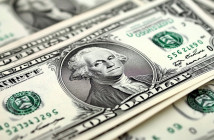In the first quarter of 2024, U.S. GDP grew at an annual rate of 1.6% — almost a percentage point slower than expected. At the same time, core inflation remained higher than anticipated, with consumer prices (excluding energy and food) increasing at an annual rate of 3.7%, up from 2% in the fourth quarter of 2023.
Investor expectations now are for the U.S. Federal Reserve to deliver only one interest-rate cut in 2024. This represents a remarkable shift from the end of 2023, when markets expected the Fed to lower rates six times in 2024. Over the first quarter of this year, investors slashed their bets on rate cuts to make way for the view that strong growth and stickier inflation would persist. Now, there’s evidence of slowing growth and high inflation, a combination that has prompted some investors and analysts to warn of stagflation.
How should we connect the dots? Is the U.S. economy still booming? Or should we be concerned about a period of slow growth and high inflation?
First, look under the hood of headline GDP growth and you will see that the economy was, in fact, strong in the first quarter of this year. Various volatile factors pulled down the headline number: imports outpacing exports; the change in inventories from the previous quarter, and a smaller boost offered by government spending compared to last year.
But the core of the U.S. economy is consumer spending, which has been above its pre-pandemic trend since 2021 and, according to my calculations, was around 1% higher last quarter than pre-pandemic forecasts suggest. On a year-over-year basis, real consumer spending grew at an annual rate of 2.4% last quarter and is not trending down.
Strong aggregate consumer spending is being driven partly by increases in Americans’ wealth that are overpowering the effect of higher U.S. interest rates. Since the Fed’s interest-rate-setting committee met in November, the S&P 500 is up strongly. Moreover, rising home values — and many homeowners’ feeling that they won the lottery by locking in low mortgage rates prior to 2022 — are providing an additional boost.
Resilient household spending is slowing the process of bringing labor demand back into balance with the supply of workers. In the first quarter of 2024, there were 1.4 job vacancies for every unemployed worker, and the unemployment rate was below 4%. Labor-market tightness is leading to rapid wage growth: wages increased last quarter at rates inconsistent with the Fed’s 2% inflation target. These data support the view that the economy is stronger than the headline GDP growth rate suggests.
How can financial conditions be so loose, consumer spending so buoyant, and the labor market so tight when the federal funds rate has been above 5% for the past 12 months?
This is less of a puzzle than meets the eye. If one takes a longer view, it becomes clear that higher interest rates have slowed the economy. The Fed began raising rates 25 months ago. In 2021, the economy was adding around 600,000 net new jobs each month; that fell to 400,000 in 2022, and even further, to around 225,000, in 2023. Likewise, underlying inflation has fallen from around 5.5% in early 2022 to around 3% today.




